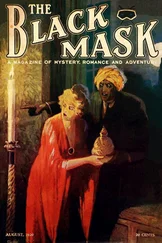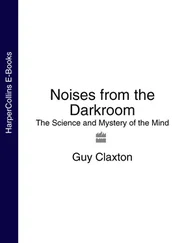In this chapter I explain all these features, beginning with the shadow and its ring of fire. Then I describe how the black-hole images in Interstellar were actually produced.
When imaging Gargantua in this chapter, I treat it as a fast-spinning black hole, as it must be to produce the extreme loss of time that the Endurance ’s crew experience relative to Earth (Chapter 6). However, for fast spin, a mass audience could be confused by the flattening of the left edge of Gargantua’s shadow (Figure 8.1) and by some peculiar features of the star streaming and the accretion disk, so Christopher Nolan and Paul Franklin chose a smaller spin, 60 percent of the maximum, for their Gargantua images in the movie. See the last section in Chapter 9.
Warning: The explanations in the following three sections may require a lot of thought; you can skip them without losing pace with the rest of the book. Not to worry!
The Shadow and Its Ring of Fire
The shell of fire (Chapter 6) plays a key role in producing Gargantua’s shadow and the thin ring of fire alongside it. The shell of fire is the purple region surrounding Gargantua in Figure 8.2, and it contains nearly trapped photon orbits (light rays) such as the one in the upper right inset. [20] See Figures 6.4 and 6.5.
Suppose you are at the location of the yellow dot. The white light rays A and B and others like them bring you the image of the ring of fire, and the black light rays A and B bring you the image of the shadow’s edge. For example, the white ray A originates at some star far from Gargantua, it travels inward and gets trapped on the inner edge of the shell of fire in Gargantua’s equatorial plane, where it flies round and round, driven by the whirl of space, and then escapes and comes to your eyes. The black ray also labeled A originates on Gargantua’s event horizon, it travels outward and gets trapped on that same inner edge of the shell of fire, where it goes round and round, then escapes and reaches your eyes alongside the white ray A . The white ray brings you an image of a bit of the thin ring; the black ray, an image of a bit of the shadow’s edge. The shell of fire is responsible for merging the rays side by side and directing them toward your eyes.

Fig. 8.2. Gargantua ( central spheroid ), its equatorial plane (blue), its shell of fire ( purple and violet ), and black and white light rays that bring you images of the shadow’s edge and the thin ring alongside it.
Similarly for the white and black rays B , except they get trapped on the outer edge of the shell of fire going clockwise (struggling against the whirl of space), while rays A are trapped on the inner edge going counterclockwise (and driven by the whirl of space). The flattening of the shadow’s left edge in Figure 8.1 and rounding of its right edge are due to rays A (left edge) coming from the inner edge of the shell of fire, very close to the horizon, and rays B (right edge) from the outer edge of the shell of fire, much further out.
Black rays C and D in Figure 8.2 begin on the horizon, travel outward and get trapped on nonequatorial orbits in the shell of fire, and then escape from their trapped orbits and come to your eyes, bringing images of bits of the shadow edge that lie outside the equatorial plane. The trapped orbit for ray D is shown in the upper right inset. White rays C and D (not shown), coming from distant stars, get trapped alongside black rays C and D , and then travel to your eyes alongside C and D , bringing images of bits of the ring of fire alongside bits of the shadow edge.
Lensing by a Nonspinning Black Hole
To understand the pattern of gravitationally lensed stars outside the shadow and their streaming as the camera moves, let’s begin with a nonspinning black hole and with light rays that emerge from a single star (Figure 8.3). Two light rays travel from the star to the camera. They each travel along the straightest line they can in the hole’s warped space, but because of the warping, each ray gets bent.
One bent ray travels to the camera around the hole’s left side; the other, around its right side. Each ray brings the camera its own image of the star. The two images, as seen by the camera, are shown in the inset of Figure 8.3. I put red circles around them to distinguish them from all the other stars the camera sees. Note that the right image is much closer to the hole’s shadow than the left image. This is because its bent ray passed closer to the hole’s event horizon.

Fig. 8.3. Top : The warped space around a nonspinning black hole as seen from the bulk, and two light rays that travel through the warped space from a star to the camera. Bottom : The gravitationally lensed pattern of stars that is seen by the camera. [From a simulation by Alain Riazuelo; for a film clip of his simulation, see www2.iap.fr/users/riazuelo/interstellar.]
Each of the other stars appears twice in the picture, on opposite sides of the hole’s shadow. Can you identify some of the pairs? The black hole’s shadow, in the picture, consists of directions from which no rays can come to the camera; see the triangular shaped region labeled “shadow” in the upper diagram. All the rays that “want to be” in the shadow got caught and swallowed by the black hole.
As the camera moves rightward in its orbit (Figure 8.3), the pattern of stars seen by the camera changes as shown in Figure 8.4.
This figure highlights two particular stars. One is circled in red (the same star circled in Figure 8.3). The other is inside a yellow diamond. We see two images of each star: one image is outside the pink circle; the other is inside the pink circle. This pink circle is called the “Einstein ring.”
As the camera moves rightward, the images move along the yellow and red curves.
The star images outside the Einstein ring (the primary images, let’s call them) move in the way one might expect: smoothy from left to right, but deflecting away from the black hole as they move. (Can you figure out why the deflection is away from the hole instead of toward it?)

Fig. 8.4. The changing star pattern seen by the camera as it moves rightward in its orbit in Figure 8.3. [From the simulation by Alain Riazuelo; see www2.iap.fr/users/riazuelo/interstellar.]
However the secondary images, inside the Einstein ring, move in an unexpected manner: They appear to emerge from the right edge of the shadow, move outward into the annulus between the shadow and the Einstein ring, swing leftward around the shadow, and descend back toward the shadow’s edge.
You can understand this by going back to the upper drawing in Figure 8.3. The right ray passes near the black hole, so the right stellar image is near its shadow. Earlier in time, when the camera was further leftward, the right ray had to pass even closer to the black hole in order to bend more strongly and reach the camera, so the right image was very close to the edge of the shadow. By contrast, earlier in time, the left ray passed rather far from the hole and so was nearly straight and produced an image rather far from the hole.
Читать дальше















